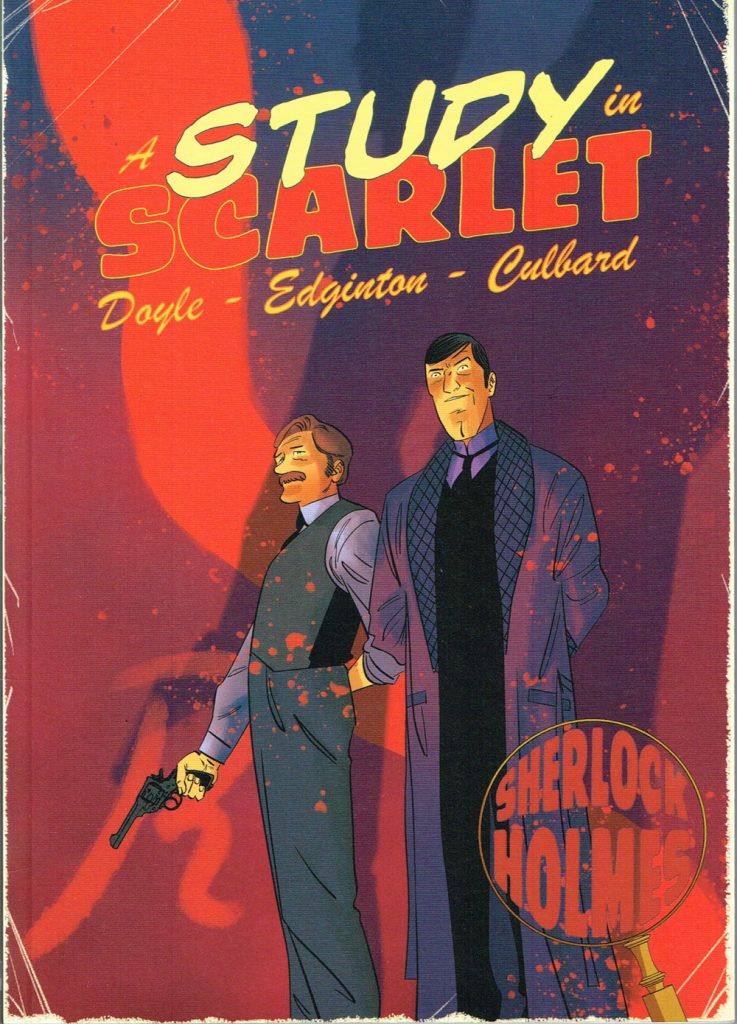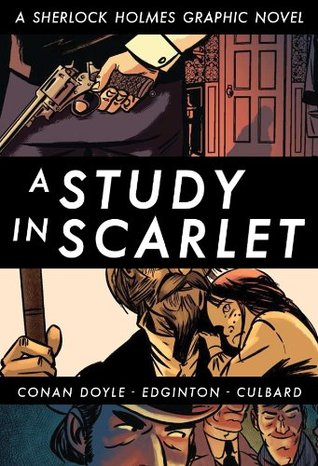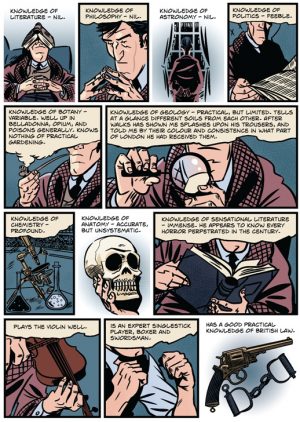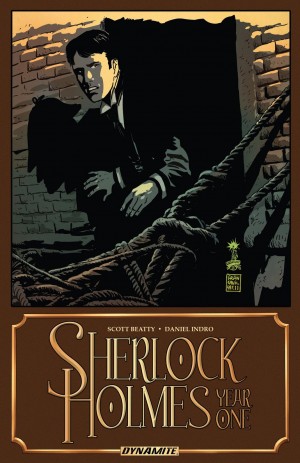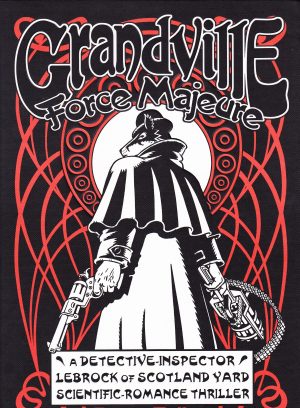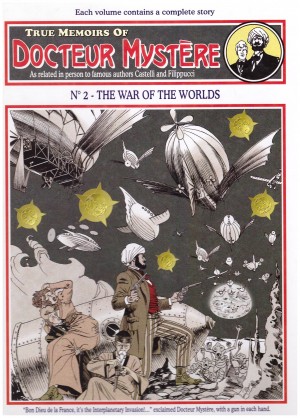Review by Roy Boyd
The blurb on the inside cover makes the bold claim that the book from which this is adapted – Arthur Conan Doyle’s A Study in Scarlet – is the “most influential and sensational whodunnit ever written”. Normally this could be attributed as hyperbole, but in this instance it’s probably true. While everyone’s favourite consulting detective wasn’t entirely original (something which Conan Doyle, through his characters, readily admits) there’s no denying that he quickly grew to become the colossus of detective fiction, a position he arguably still holds to this day, when the character has never been more popular.
So, apart from being in the public domain (i.e., they’re out of copyright and anyone can do whatever they want with the characters) is there any good reason for producing these adaptations? SelfMadeHero obviously thought so, and this series includes all four Holmes novels, first produced in 2010. Seven years later, they issued pocket-sized versions, so one can assume that the previous editions sold well enough to warrant these shrunk-down copies.
With many titles you just can’t knock out pocket-sized versions of books that were originally printed larger, but it’s really not an issue with these books. They look as if they were drawn, and more importantly lettered to be read at this size. With that out of the way, what about the content?
INJ Culbard and Ian Edginton have worked together many times, often for 2000 AD, and it’s clear they collaborate well. Using Conan Doyle’s novel as much as possible, they distil the essence of the book into an easily digestible package that wouldn’t put off any comic fan. The language may be a bit flowery for younger readers, but given that the art form hadn’t even been invented when a 26 year old Conan Doyle penned this adventure, this adaptation works remarkably well. The purely mechanical aspects of adapting a story so faithfully while making sure that it works as a comic must have been daunting, but both collaborators do a superb job. The story, like the book, is very wordy in places, but, like Dickens, it’s this verbosity that gives the writing much of its character, and adds to the evocation of the Victorian era.
The artwork is a little cartoony, which is no bad thing, with brushwork so bold that many panels look like woodcuts. Some of the cast seem to have stepped out of a Studio Ghibli movie, but this gives a quintessentially English character a more modern feel that helps make it more accessible to a broader readership. Sherlock’s chin in this iteration puts him somewhere between Desperate Dan and Judge Dredd, and he’s more than a bit reminiscent of Rain Hughes’ updating of Dan Dare. However, it’s clear that Culbard, like almost everyone before him, has taken most of his inspiration from the wonderful illustrations by Sidney Paget that accompanied the Holmes stories when they first appeared in The Strand.
This is a worthwhile version of an oft-adapted story that manages to stay true to the original while broadening the appeal of a classic of detective fiction.
